Part 3: Science Behind Permanent Weight Loss
The next piece of the puzzle on your weight loss journey is figuring out the action plan.
In terms of the golden circle, figuring out the ‘how’ and ‘what’ to do.
There are two ways you can go about this:
1. Try out all the different diets and exercises and see what works for you.
2. Understand the science behind permanent weight loss and take a smarter action.
As mentioned before, I tried the first option for 6 years and it didn’t work out too well for me.
Actually, it did work for me over the short-term.
But I would re-gain all that weight back in a matter of months if not weeks.
And I’ve noticed the same pattern among many others who have gone on extreme diet and exercise challenges.
Hopefully by now, we’re all on the same page in terms of taking long-term, strategic action.
In order to do that, it’s important to understand the inner workings of a brain.
Neuroscience 101
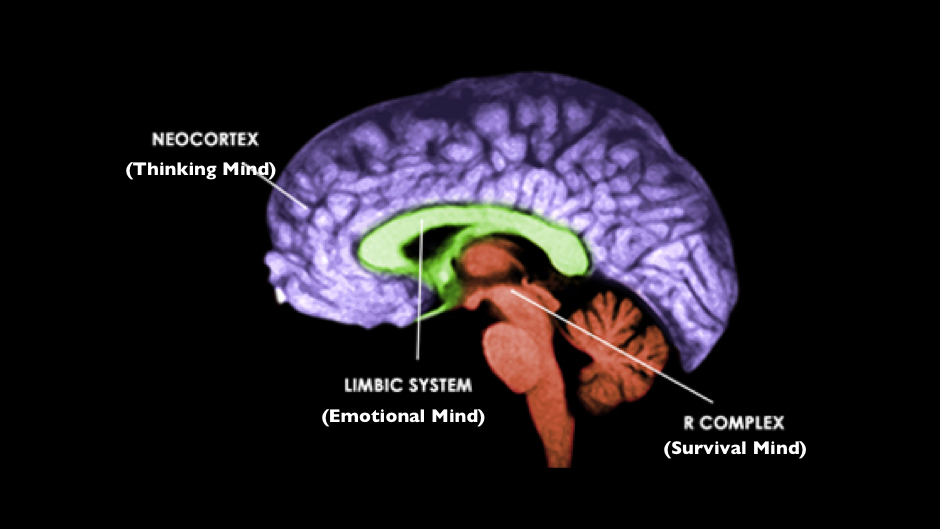
Our brain comprises of three main parts:
The Neocortex – our thinking mind.
This is the part of our brain responsible for conscious thought. Things like reading and interpreting this beautifully crafted article. Speaking, listening, etc.
The Limbic System – our emotional brain.
This is the part of the brain responsible for generating emotions. It is also the part of the brain that stores long-term habits and memory. (aha!)
The R-Complex – the reptilian brain.
This is the part of the brain responsible for most of our biological and hormonal processes (i.e. breathing, heart pumping, digestion).
To simplify, the Neocortex is what’s happening on a conscious level.
Whereas the Limbic System and R-Complex are what’s happening at a sub-conscious level.
The reason I’m sharing this is because the next stat will blow your mind away (pardon the pun)...
Brain imaging scans were done to find out how much brain activity is happening in each part of our brain.
Guess how much of it was conscious and how much was sub-conscious?
.
.
Just guess. How much do you think?
.
.
Are you ready?
.
.
Scans showed that 5% of brain activity is happening in the conscious mind and 95% in the sub-conscious mind.
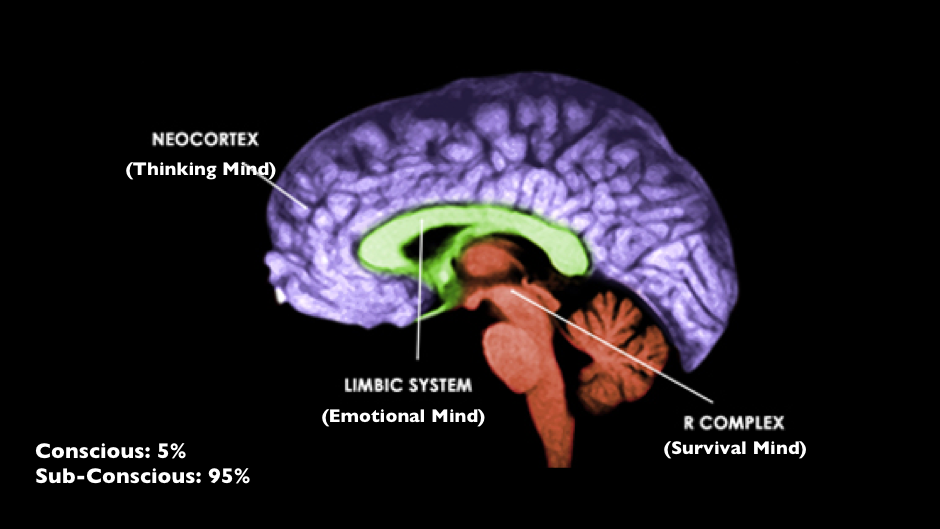
Wow!
Now think about all the times you blamed your motivation and willpower for your failed weight loss attempts (i.e. your conscious thought).
What are the chances of success if you have only 5% of your brain working towards your goals?
Not much.
So the next question becomes:
How do we align all three parts of our brain to reach our weight loss goals?
I'm glad you asked.
1. Neocortex (Thinking Mind)
Even though it contributes to a small percentage, it is important to feed your conscious mind with the right information.
With the amount of conflicting information available to us, it is easy to be overwhelmed and paralysed.
A lot of marketers in the weight loss industry misconstrue scientific information for their benefit of selling diet supplements and programs.
Now don't get me wrong, nutrition is complex.
I went through significant hours of training and it's quite amazing to know what is happening within our bodies at a cellular level.
However, all the complexities can be broken down into very simple, practical action steps.
In fact, I've made a meal plan cheatsheet to help you plan your meals.
Click here to download (PDF).
2. Limbic System (Emotional Mind)
This is the part of the brain that many people don't talk about.
Yet, it is probably the biggest determinant to your long-term success.
This is because the neural networks in our Limbic System are responsible for the majority of our habit formations.
After we respond to cues in a routine like manner, our behaviours get stored in our memory through what is known as 'associative learning.'
For example, let's say you finish a long day at work and when driving back home, you decide to get a treat at the drive thru.
You slowly start repeating this pattern every time you've had a stressful day at work.
You have now associated a stressful day at work (cue) with going to the drive thru to get a snack (routine) in an effort to blow off some steam (reward).
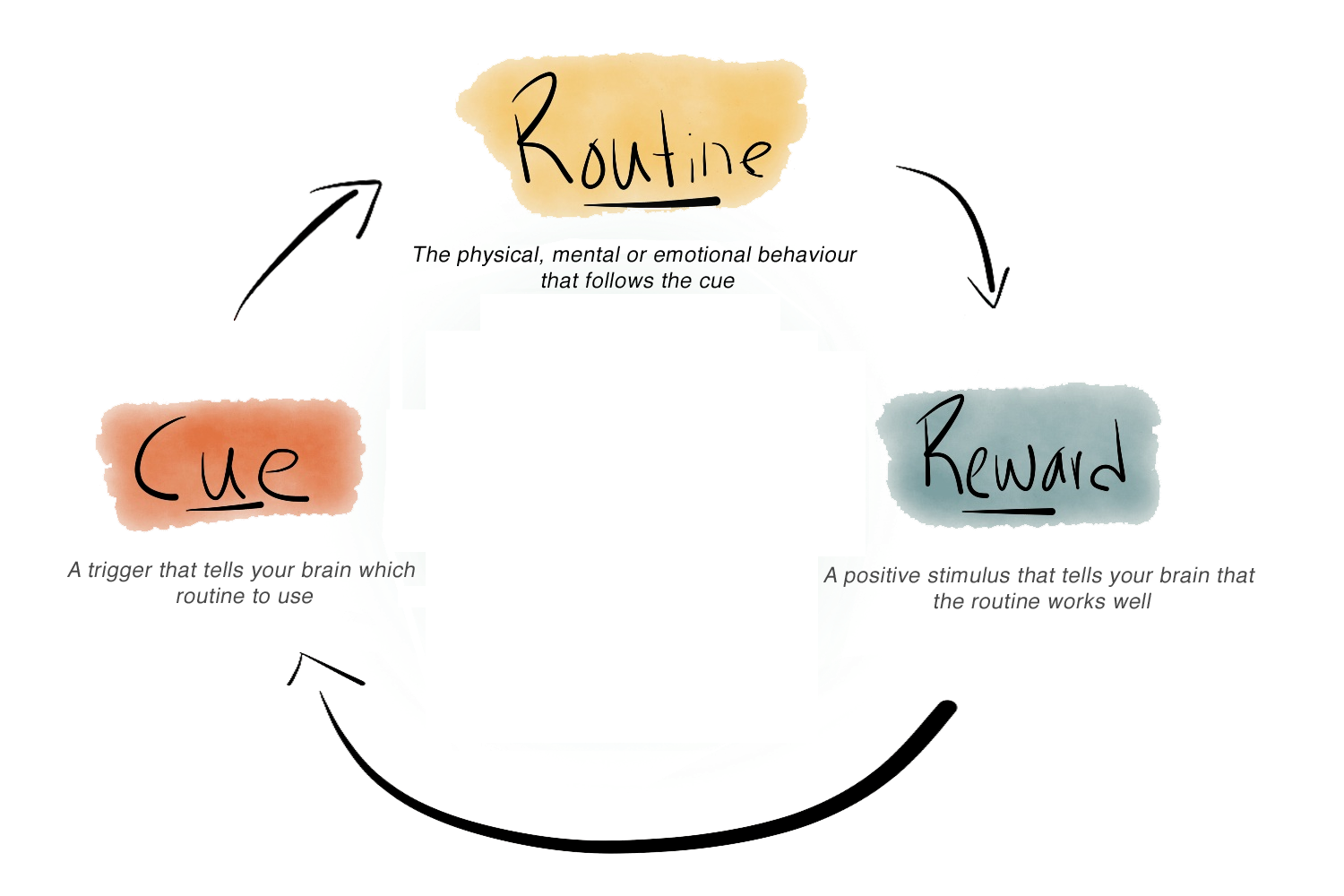
There are many unconscious behaviours that we have built associations with.
Many of these behaviours lead us to take action in the opposite direction to our health and fitness goals.
The good news however is that there is a process to start building positive associations with healthy behaviours so they become automatic to us.
You'll learn more about how to do this in the next section.
But for now, it is important to know that it is far easier to build 'healthy habits' if you have built positive associations to these behaviours.
If you try to 'eat healthy' in a way that is burdensome and painful, you'll need to rely mostly on motivation and willpower.
(And we know how far that takes us...)
But if you start building habits in a way that you become naturally drawn towards eating healthy and feeling energetic, the game changes.
All of a sudden, you don't have to constantly 'think about' eating healthy.
You don't have to constantly fight cravings.
You don't have to become anxious when going out for dinner with friends.
You start eating with more freedom and you become naturally drawn towards food that makes your body energetic and agile throughout the day.
Feeling good and eating 'healthy' becomes a natural part of your daily living.
I know this may sound too good to be true right now, but stick with me and I'll show you how to do this more in depth.
3. R-Complex (Reptilian mind)
The third part of the brain that we need to align with our goals is the R-Complex.
This is also known as the reptilian brain because it controls many of our bodily processes that we don't have conscious control over.
The part that is most relevant to us is to create a hormonal environment within our body that gets us into fat-burning mode.
The science behind this is quite complex and will take many pages to explain.
To simplify it though, our R-complex is in constant communication to our other body parts through hormone messengers.
These hormone messengers send signals to our body to complete certain metabolic processes.
Depending on these communications, our body can either be in fat-storing mode or fat-burning mode.
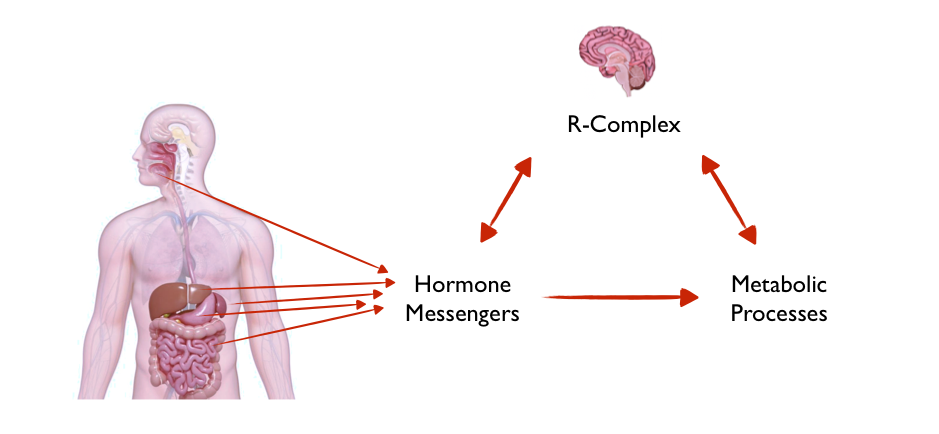
Even though all this is happening beneath our conscious awareness, we can take certain actions to create a hormonal environment that promotes fat-burning mode.
There are two things that most people already know will help put the body in fat-burning mode - Nutrition and Exercise.
However, there are two more areas that many people aren't aware of.
Studies are increasingly showing that these two other areas can have a bigger impact on weight loss, more than even nutrition and exercise.
They both start with 'S'.
Do you wanna take a guess?
.
.
Go on.
.
.
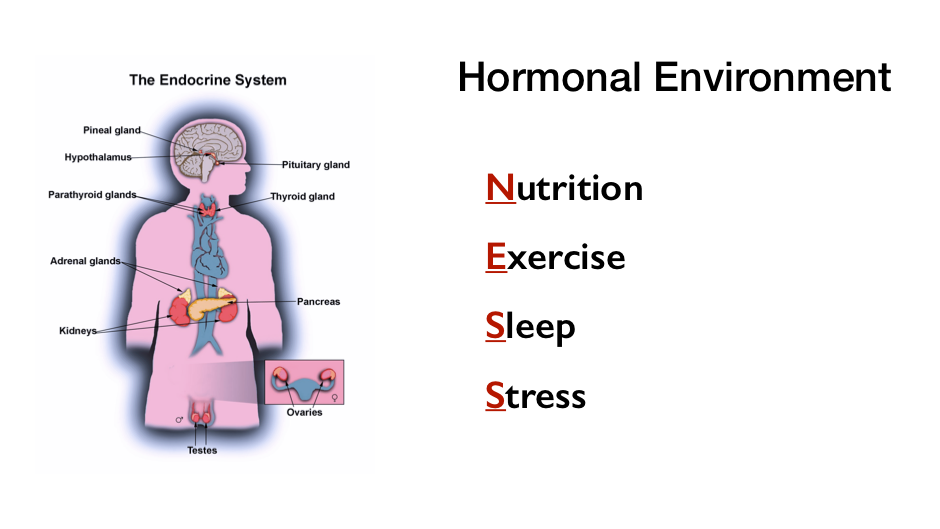
That's right.
It does not matter how perfect your Nutrition and Exercise is.
If you don't address your Sleep and Stress, it is virtually impossible to create a fat-burning environment within your body.
What Next?
Now I know this may seem like a lot to change all at once.
And if you do try to change everything at once, it is a recipe for disaster.
It is important to build a strategic action plan and start by focusing on areas that will be most beneficial in your particular situation.
One of the most effective ways to do that is by focusing on what is by building habits through the '3 S' framework.
We'll cover this in our next and final post.
SUBTEXT
- 1In order to take smarter action, it is important to understand the inner workings of our brain. Our brain is broken into three components and 95% of our brain activity is happening on the sub-conscious level.
- 2The majority of our automatic behaviours are stored in the limbic system through a process known as 'associative learning'. To make healthy habits a natural part your daily routine, it is important to know how to link healthy behaviours with positive associations.
- 3Our body's hormonal environment ultimately decides whether we are in fat-storing or fat-burning mode. In order to give ourselves the best chance of succeeding, we need to address Nutrition, Exercise, Sleep and Stress (N.E.S.S). The most effective way to address all these aspects of our lifestyle is through strategic habit building.
Lesson 1 / Lesson 2 / Lesson 3 / Lesson 4
Authored by Kern Kapoor (BE, Pn2) - Certified Nutrition Coach
If you'd like to get in touch, click here.
Privacy Policy | Terms of Use
© 2018 Body Knows Best
